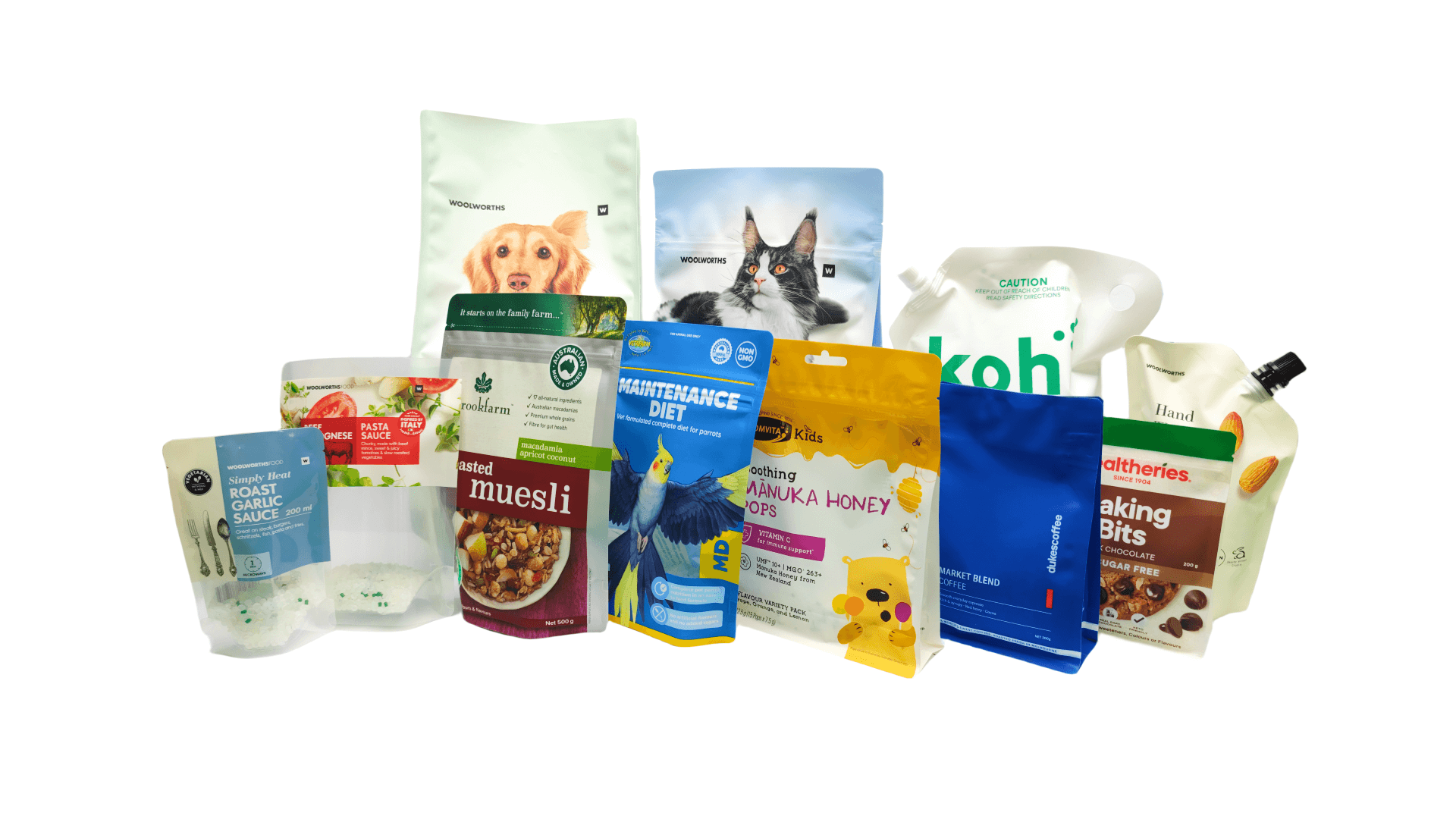Why You Should Consider Single Serve Sachet Packaging for Your Products
What is Sachet Packaging?
Sachet packaging is a kind of small, single-use flexible pouch that can contain a variety of items like food, liquid, cosmetics, sauce, powders, household products, and pharmaceuticals.
Single serve sachet packaging has seen significantly rising adoption in the modern consumer landscape. Sachets provide a convenient format for product sampling and transporting portions on the go.
When you are trying to introduce your products to your customers, offering single-use sachet samples is a convenient option for both customers and your business.
Sachets are portable and easy to distribute, and potential buyers can test your products on the go. Sachet package minimizes packaging waste compared to full containers, while still enabling customers to try before they commit to a larger purchase.
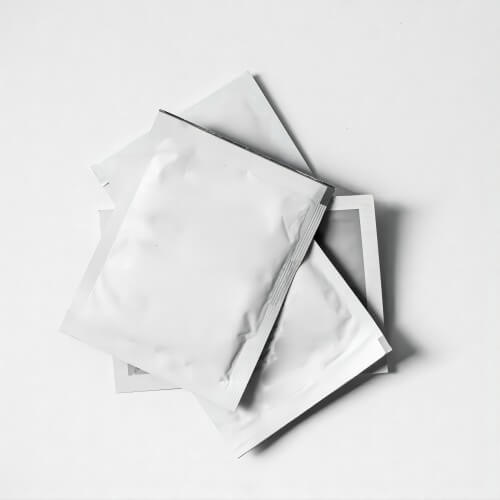
Benefits of Single-serve Sachet Packaging
Convenience, versatility, and cost-effectiveness make sachet packaging so popular in various industries.
- Convenience:
Sachets are compact and lightweight, making them highly portable. Consumers only need to carry the single-use portions of products for on-the-go use without messy cleanup. - Reduce Waste:
The single-serve format of sachet packaging minimizes the packaging size, only the required amount is packaged which reduces the waste. - Effective Marketing:
Sachets are often used as free samples or promotional items to raise brand awareness.Single-use sachet packaging enables product sampling, trials, and impulse buys which can boost full-size purchases. Consumers try a product without committing to a larger package, encouraging trial purchases.
- Reduced Risk of Contamination:
Sealed sachet packaging plays a crucial role in safeguarding products from potential contamination, they deliver a hygienic and untainted dose to each consumer.This is particularly significant for items like foods, cosmetics, and medicines where cleanliness and sterility are paramount.
- User Friendly:
Sachet packaging usually with tear notches or other easy-open features, which make consumers test the products easily. This increases the overall convenience and positive user experience for consumers. - Minimized Need for Preservatives:
Single serve sachet packaging helps reduce the need for preservatives because each portion is individually sealed, preventing exposure to air and contaminants.
We can see single serve sachet packaging offers convenience, waste reduction, product protection, and sales opportunities for both brands and users.
They address various consumer and industry needs, offering a practical and efficient solution for single-use or small-portioned products.
The Materials of Single Serve Sachet Packaging
Common sachet packaging materials include flexible films, foil laminates, paper, non-woven, and other barrier materials. These materials help protect the contents from external factors such as moisture, light, and air.
- Plastic Sachet Packaging:
Plastic sachet packaging is usually made from thin plastic film such as polyethylene (PE) or polypropylene (PP). They are widely used for liquids, creams, sauces, condiments, shampoos, soaps, etc.

Material structures like PET/PE, NY/PE, PET/AL/PET/PE, and PET/MPET/PE are popular for plastic sachets.Sealing ways are heat-sealed or self-adhesive strips.
- Paper Sachet Packaging:
Crafted solely from paper or a paper-plastic composite (material structure is paper/PE). It is budget-friendly. And ideal for powders, sugars, and creamers.
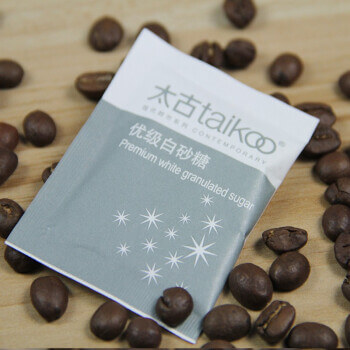
Glued or heat-sealed seams are used for paper sachet packaging pouches. - Laminate Sachet Packaging:
Aluminum foil supplies a high barrier that is good for retaining flavor and freshness. They are widely used for coffee, tea, spices, supplements, and medications.
The popular multi-layer material structures are PET/AL/PET/PE, paper/AL/PE.
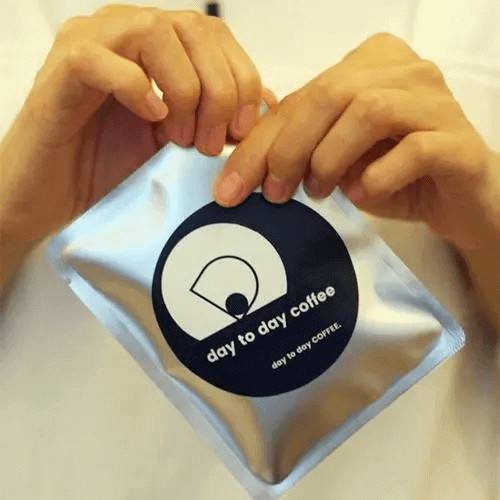
Sealing way: crimped edges or adhesive seal. - Non-woven Sachet Packaging:
Constructed using non-woven fabric materials like polyester. Used for instant tea and coffee, etc.
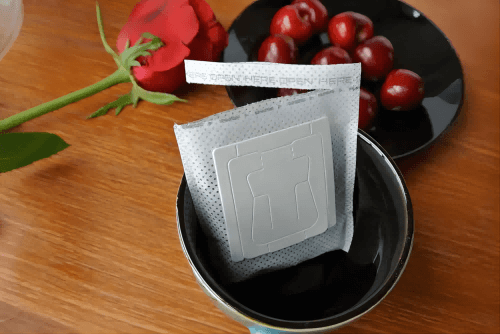
The materials used in sachet packaging vary based on the specific requirements of the product, required barrier properties, etc.
Sachet manufacturers often choose materials that balance functionality, cost-effectiveness, and environmental impact.
Additionally, advancements in material science continue to bring about innovations in sachet packaging materials to address sustainability concerns and performance requirements.
Easy Tear Sachet Packaging Material
Easy-tear sachet packaging materials are designed to facilitate convenient opening by consumers without the need for scissors or other tools.
A series of innovative easy-tear materials developed by KDW research and development teams, contribute to the easy use of consumers. KDW aims to satisfy consumers with sachet solutions that are simple and pleasant to interact with from start to finish.
- PET//PE//AL/PE:
Coffee sachet packaging made from PET//PE//AL/PE which offers a convenient tear-anywhere feature that benefits both consumers and producers.The laminate structure combines polyethylene (PE) for moisture and gas barrier properties with aluminum foil’s excellent oxygen barrier. This protects the freshness and flavor of ground coffee sealed within.
PET provides strength and rigidity to the sachet while still allowing it to flex. Most notably, the material engineering allows the sachet to be torn open from any point along the sealed edges.
The PE composite layer positioned between the PET and aluminum foil in the laminate structure serves two important purposes. It acts as an adhesive tying the different material components together into a cohesive laminate, also helps reduce potential toxicity concerns.
By using an advanced laminate combining key polymer and foil materials, the coffee sachets achieve optimal barrier performance and usability. Their unique anywhere-tear ability streamlines the user experience for a hassle-free way to access portions on the go.
This is a small but impactful innovation that benefits the entire supply chain.
- BOPP/ Single Hot MBOPP:
The laminate structure of BOPP/MBOPP provides an excellent material choice for tea sachet packaging, offering several key advantages:

- High barrier properties: The combination of BOPP (biaxially oriented polypropylene) and MBOPP (metalized BOPP) creates a strong moisture and gas barrier to protect the freshness and flavor of tea leaves.
- Easy tear ability: While maintaining an effective seal, the laminate allows easy one-handed opening along the sachet edges. This provides convenience for on-the-go consumption.
- High heat sealing strength
- Eco-friendly sachet packaging: The BOPP/MBOPP laminate structure is a recyclable and eco-friendly material choice for packaging due to its composition of mono-material polypropylene (PP) family films which are recyclable.
By utilizing recyclable polypropylene films, the laminate structure supports a circular economy approach. This recyclability is a key advantage driving wider adoption of BOPP/MBOPP laminates across various markets.
- BOPP/NY/PE:
BOPP/NY/PE, NY/MPET/PE, and NY/PE laminate structure with a tear notch that can open the sachets in a straight line.
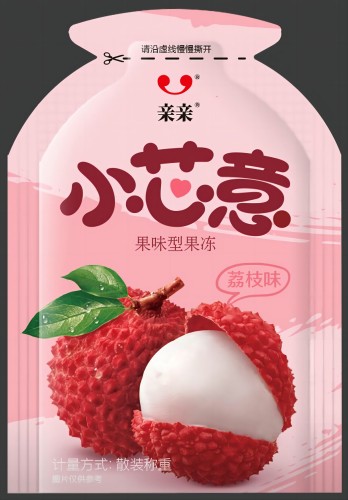
This provides a more controlled and even opening experience compared to random tearing. Users can be sure of exposing a clean, uniform mouth that allows easy access to the contents inside.
Easy tear sachet packaging materials provide a more user-friendly experience that enhances the consumer experience.
By prioritizing ease-of-use, sachet packaging companies can gain a competitive advantage through packaging that improves convenience and brings enjoyment to the consumption event. A positive user experience leads to greater customer satisfaction and brand loyalty over the long run.
10 Users for Single Serve Sachet Packaging
Since single-use sachet packaging with its convenience, versatility, and cost-effectiveness contribute to a wide range of industries and products:
- Food and Beverage Industry:
Single-serve sachets are popular for packaging food and beverage products.- Condiments: such as ketchup, mustard, mayonnaise, and soy sauce.
- Sugar and Sweeteners: sugar, sweeteners, and flavored syrups for coffee and tea.
- Spices and Seasonings: individual portions of spices and seasonings
- Pharmaceuticals and Healthcare:
- Medications: such as pharmaceuticals, vitamins, and over-the-counter medications.
- Diagnostics: Certain diagnostic exams and medical supplies for accurate dosage.
- Cosmetics and Personal Care:
Single-serve sachets packaging is used for travel-sized or sample packs- Shampoo and Conditioner
- Lotions and Creams.
- Household Products:
- Detergent and Cleaners: such as laundry detergent, dishwashing soap, and household cleaners.
- Insect Repellent
- Retail and Consumer Goods:
Sachets are employed for promotional giveaways and marketing campaigns.- Sample Products: such as pharmaceuticals, vitamins, and over-the-counter medications.
- Promotional Items: Certain diagnostic exams and medical supplies for accurate dosage.
- Travel and On-the-Go Products:
- Travel Toiletries: such as toothpaste, shampoo, and shower gel.
- Snack Packs: portable snacks like instant oatmeal, nuts, and dried fruits.
- Fitness and Sports Nutrition:
- Protein Powders: individual portions of protein powders and nutritional supplements.
- Energy Drinks: for on-the-go use.
- Beauty Salons and Spas:
- Hair Dye and Color Treatments
- Face Masks
- Agriculture:
- Fertilizers and Soil Treatments
- Hospitality and Catering:
Sachets are commonly provided in hotels and restaurants.- Hot Beverage Accessories: coffee, tea, creamer, and sugar.
- Salt and Pepper: Certain diagnostic exams and medical supplies for accurate dosage.
Sachet Packaging VS. Stick Packing
Sachet packaging and stick packing are both popular for packaging single-use portions of products, but there are some distinguishing qualities between the two formats that influence their respective applications.
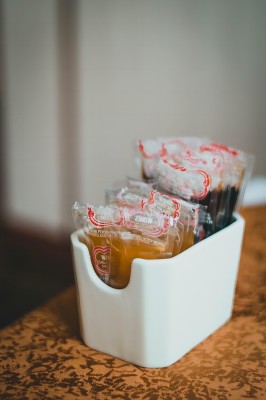

| Item | Sachet Packaging | Stick Packing |
| Form Factor | Small and flat pouch with one or more sealed edges | Elongated and narrow, resembling a tube or stick, with sealed edges on both sides |
| Materials | Flexible Films such as polyethylene (PE), polypropylene (PP), foil laminates, or paper-based laminates | Flexible Films same as Sachet Packaging. |
| Sealing | Sealed on multiple edges to contain the product securely. The opening is typically at the top or along one edge. | Sealed on both ends. |
| Usage | Versatile and used for a wide range of products, including condiments, spices, instant beverages, cosmetics, and pharmaceuticals. | Commonly used for powdered or granulated products such as instant coffee, sugar, protein powders, and pharmaceuticals. |
Considerations for Choosing Between Sachet Packaging and Stick Packing
The choice between sachet packaging and stick packing depends on the specific requirements of the product, industry standards, and consumer preferences.
Each packaging type has its advantages and is well-suited to different applications.
- Consider the physical characteristics of the product:
Sachet Packaging: versatile that accommodates liquids, powders, and creams.
Stick packing: well-suited for dry, granulated, or powdered substances. - Industry and Application:
Both packaging types are used across various industries.
Stick packs are often favored in the food and beverage sector for single-serve powdered products. - Portability:
Both offer portability.
Stick packs with elongated shapes can be particularly convenient for certain on-the-go applications. - Customization:
Sachets provide more flexibility in terms of size and shape than stick packing, making the sachet packaging more suitable for a broader range of customization options.
Start With KDW
+86 13559233681(Wechat, Whatsapp)
No1, Anbian Rd, Torch High-Tech Zone (XiangAn), Xiamen, Fujian, China


